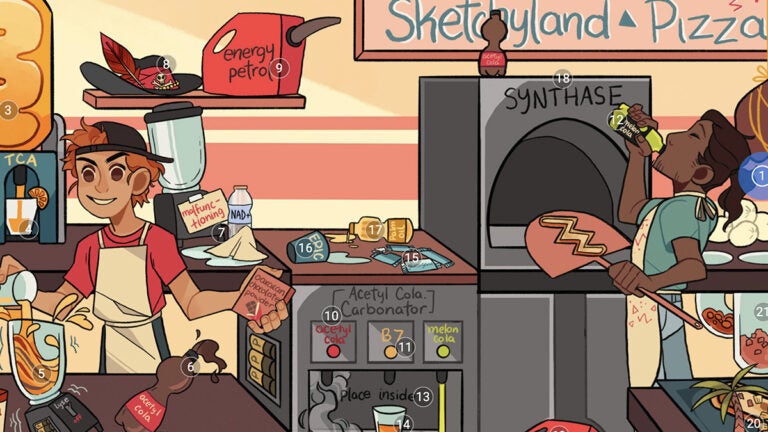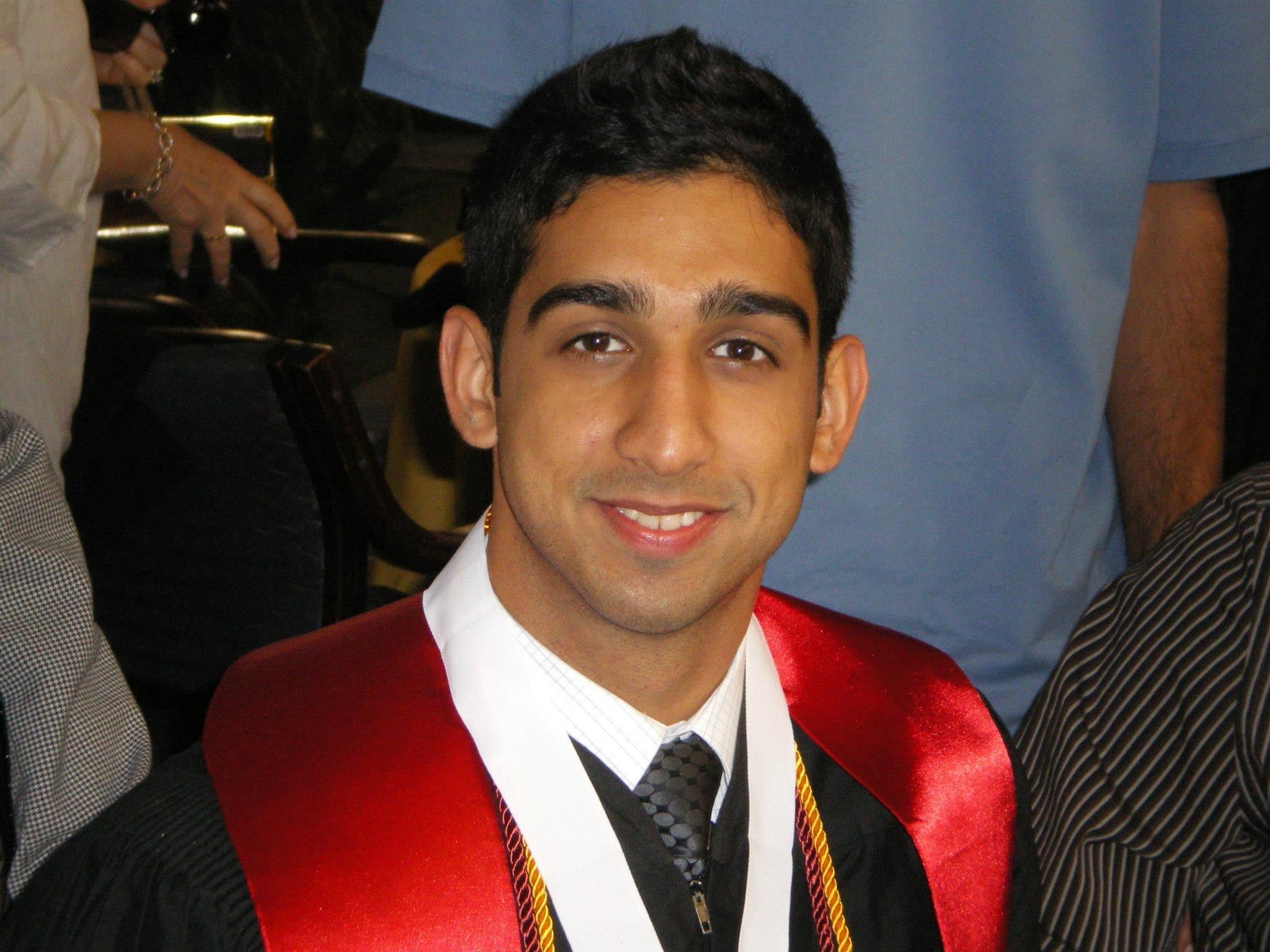
A USC Dornsife alumnus is revolutionizing how future doctors learn
A very ill-fated party may have produced a revolutionary new way to remember information.
In 55 B.C., Greek philosopher Cicero recounts the tale of the poet Simonides, who was invited to perform at a banquet. Briefly called away during his recitation, Simonides returns to find that the roof of the venue has caved in and crushed the attendees beyond recognition.
Fortunately, he’s able to call to mind an image of the room and where each person was sitting within it, thus correctly identifying the corpses for burial. Thus was born the “method a loci,” or “memory palace” strategy, which uses visual and spatial memory to store facts.
A slightly less macabre event sparked the creation of educational software SketchyMedical, affectionately called “Sketchy” by its founders. Developed by USC Dornsife Letters, Arts and Sciences alumnus Saud Siddiqui, the curriculum uses memory palace principles as a springboard to effective memorization.
“We were in the last year of medical school and up for hours the night before an exam,” recounts Siddiqui. “We started drawing pictures on this whiteboard in our apartment to help us remember. It was working a lot better than just reading a textbook. One day my cofounder Andrew Berg and I just had this crazy idea: ‘Why don’t we put this in a video, put it online and share it with people around the world?’”
In 2013, they launched Sketchy, which has since acquired 30,000 yearly subscribers. Medical school instructors have reached out to collaborate on developing new teaching curriculum. In 2019, Siddiqui was listed on the Forbes 30 under 30 list, which honors innovative young business leaders across the globe.
A born businessman
Business ownership occupied Siddiqui’s mind from a young age. He’d taken various stabs at it since high school, offering services to mix and master music and creating music software instructional videos. One such video went viral on YouTube in the platform’s early days, racking up over a million views.
He arrived at USC unsure of his major, but after excelling in biology classes, he enrolled in biological sciences with the intent of later enrolling in medical school. He rounded this out with entrepreneurship classes at the USC Marshall School of Business.
“I always had that entrepreneurial bug and I knew that at some point I’d start a company. But I didn’t know what that would be. I thought going down the medical route would definitely open a lot of ideas and could be my area of expertise.”
He credits a class with Albert Napoli, lecturer of clinical entrepreneurship at USC Marshall, as particularly inspiring.
“He would always bring in guest speakers, people that had taken that class and were now successful entrepreneurs,” says Siddiqui. “They’d tell how they’d been in the same chairs we were sitting in and were now out running companies. It was very inspirational and opened my eyes to how I could do it, too.”

Good old-fashioned people skills, imparted by Napoli, helped him out of his comfort zone and made an impression.
“We were required to network,” he says. “We’d have an assignment to interview someone and get their business card. I’d never done that, and it forced me to try it. I met a lot of people that had a lasting effect on me and were mentors.”
Sketching out a business
After graduation from USC Dornsife, he headed off to medical school at the University of California, Irvine. It was there that the “ah-ha” moment for SketchyMedical occurred. Building off their initial whiteboard concept, he and his cofounders, Andrew Berg and Bryan Lemieux, all fellow UC Irvine students, began creating entire narrative stories to aid them as they studied. They decided to post the videos on YouTube to see if there was any interest in their idea.
This is where his past forays into building a business came in handy.
“Websites, branding, design, video and email marketing is stuff that came from prior projects. I never could have imagined at the time that I would have created, you know, a medical school course when I was trying out these ideas in high school and early college,” says Siddiqui.
In their new video, instead of asking viewers to build a memory palace themselves, as other mnemonics techniques might, Siddiqui and the team built the palace for the viewer layer by layer, with colors and catchy visual scenes such as babies floating in space. Viruses, drug treatments or diseases appear again and again along the way, with the same visual ques to hammer home the information.
“By the end of the video, they have this cohesive map in their head. When they’re out on the wards in the hospital on their own, they can reenter that mentally and retrieve the information they need. It’s a road to that folder in their brain to extract all the information,” explains Siddiqui.
After their first video, a course in microbiology, debuted, success came almost instantly. “In our third year of medical school we sat down and were like, ‘Hey, these people on YouTube are demanding more videos and asking when the rest are coming out. Are we going to do this?’ And we decided, ‘You know what, let’s do this.’”
You say you want a revolution
Each of the founders took time off during medical school to help launch the company, and after Siddiqui completed his residency at The George Washington University Hospital, he returned to Sketchy.
Their software is poised to change the way medical students learn the information vital to their careers. “It’s basically become kind of a lecture substitute. It’s this culture where people are skipping class, watching Sketchy and learning everything they need to know,” says Siddiqui.
This has prompted instructors at traditional medical schools to take notice. “I think, early on, institutions were a little bit confused as to what this thing was. You know, it looks like a bunch of cartoons,” says Siddiqui. “Now the brand has become so powerful that they are approaching us and asking us, ‘How do I get this for my class? Is it okay if I use your symbols in my lecture?’”
Sketchy’s impact caught the eye of the Forbes 30 Under 30 editors. Prominent past members of the list include Sean Rad, cofounder of the dating app Tinder, and fellow USC Dornsife alumni Erica Berger ’09 and Dieuwertje “DJ” Kast ’11.
Siddiqui and his team has plan to branch out beyond just medical school. “We want to provide the most effective educational content out there, build an engaging platform, and incorporate the method of loci to unlock everyone’s potential to master any subject.”
“The goal for Sketchy is to make education better and more accessible,” he says. “Just like it helped us as we struggled in medical school, I want it to recreate that experience for people in all walks of life.”